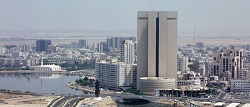
ECONOMY
Diversification initiatives and investor-friendly policies are wooing foreign direct investment into the country and strengthening its fiscal buffers.
Find out more

Have questions about SAB banking services? Let us help you with these frequently asked questions.
FAQSOur friendly Customer Support team are on hand to help with any queries you have. We're here to help!
Contact UsQuick Links


Diversification initiatives and investor-friendly policies are wooing foreign direct investment into the country and strengthening its fiscal buffers.
Find out more
The sustainable facility is just one of many efforts to enhance food security in the country, which include increased date production and phosphate output.
Find out more
Fresh investments in renewable power capacity and new green finance activities are instrumental in advancing the kingdom’s energy transition initiatives.
Find out more
Worldwide demand for Islamic bonds has shown no sign of letting up and the kingdom is leading the charge in encouraging issuance of this asset class.
Find out more
As the country opens up to international visitors and global events, travel retail is emerging as a potentially promising source of revenue.
Find out more
IN THIS EDITION
S&P Global Ratings raised Saudi Arabia’s sovereign credit rating to A+, from A, signalling strong confidence in its fiscal position which also acknowledged the kingdom’s transformative socio-economic reforms.
The ratings agency said it could consider a positive rating action over the next two years if reforms and robust non-oil activity lead to steady growth in GDP per capita, along with stronger private and foreign investment flows that reduce pressure on public spending.
Deepening of domestic capital markets, robust institutional checks and balances and recalibration of project priorities and timelines, and more nimble capital expenditure and debt issuance are some of the highlights that shows strong government emphasis on laying the framework for growth.
Investment flows—both public and private—are increasingly targeting non-traditional sectors such as tourism, manufacturing, green energy, and mining, as part of an e ort to reduce the economy’s dependence on hydrocarbons. These initiatives are expected to stimulate consumption among the country’s predominantly young population of over 35 million, while also enhancing Saudi Arabia’s long-term productive capacity. Over time, this should result in a more resilient and diversified economy, capable of generating sustainable employment and improving workforce participation.
“Funding needs across the government, government-related entities (GREs), and banks are large, given the sheer scale and size of Vision 2030 projects--estimated at above $1 trillion in total. However, we assume a more gradual pace of borrowing and execution of investments,” S&P noted in its assessment.
The ratings agency expects economic growth prospects remain solid, with real GDP expected to expand by an average of 4% over 2025-2028. The non-oil economy will be the principal driver, supported by investments in construction, logistics, manufacturing, and mining. Private consumption is expected to rise, buoyed by higher disposable incomes and government e orts to boost tourism and entertainment spending.
You are about to leave this site. You are being redirected to an external site. Would you like to leave this site?
© SAB, Saudi Arabia. All Rights Reserved, 2025
Saudi Awwal Bank, a listed joint stock company, incorporated in the Kingdom of Saudi Arabia, with paid in capital of SAR 20,547,945,220, commercial registration certificate 1010025779, unified number 7000018668, Mailing Address: P.O. Box 9084, Riyadh 11413. National Address: 7383 King Fahad Branch Rd, 2338 Al Yasmeen Dist., 13325 Riyadh, Kingdom of Saudi Arabia, Tel. +966 11 4050677, www.sab.com, licensed pursuant to the Council of Ministers Resolution No. 198 dated 06/02/1398H and Royal Decree No. M/4 dated 12/08/1398H, and regulated and supervised by the Saudi Central Bank.